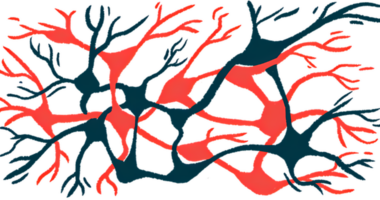Small molecules aim to detangle and stop protein clumps of Parkinson’s
Lab studies in animals show compounds able to reach into the brain

Scientists at Purdue University are advancing in lab studies multiple small molecule compounds aiming to prevent the protein aggregation associated with Parkinson’s, Alzheimer’s, and type 2 diabetes, and to safely get rid of existing clumps.
Protein aggregation is the term for when proteins — usually abnormal or misfolded ones — form clumps, a process thought to drive diseases like Parkinson’s.
In fact, a cause of Parkinson’s is the monomers, or single units, of misfolded alpha-synuclein protein that begin to clump into toxic clusters of a few units, known as oligomers. These aggregates form inside dopamine-producing nerve cells, leading to the progressive loss of dopamine, a major brain chemical messenger.
Treatments targeting alpha-synuclein in Parkinson’s, tau in Alzheimer’s
In Alzheimer’s, oligomers are composed of misfolded amyloid-beta and tau proteins.
“Alzheimer’s disease and Parkinson’s disease are associated with clumps accumulating in specific regions of the brain caused by proteins called tau and alpha-synuclein, respectively. Some forms of dementia are characterized by the presence of both tau and alpha-synuclein aggregated in the brain,” Jessica Fortin, PhD, an assistant professor of basic medical sciences, physiology and pharmacology in the College of Veterinary Medicine at Purdue, said in a university press release.
Fortin, who is leading the project, also is a member of the Purdue Institute for Drug Discovery.
Likewise, clumps of the islet amyloid polypeptide, or IAPP, are detected in the pancreas of about 70% of those with type 2 diabetes, Fortin noted. Research also suggests an elevated risk for neurodegenerative diseases among diabetics.
“Recent studies have found more than one aggregated protein in the pancreas and brain, indicative of the so-called ‘cross-seeding’ effects of these misshapen proteins,” Fortin said.
While current Parkinson’s therapies work to alleviate disease symptoms, Fortin and her team are devising an approach to target IAPP, tau, and alpha-synuclein. They created a collection of small-molecule compounds with common chemical structures to target the misfolded proteins across each disorder.
Their goal is a treatment with dual targets, one capable not only inhibiting the formation of these clusters, but also safely detangling those already formed.
“We aim to offer small-molecule therapeutics that not only prevent aggregation, but also disaggregate already-existing clumps,” Fortin said. “The body can then eliminate these byproducts and the dual action of these compounds can impede the redistribution of the clumps alongside blood vessels.”
Redistributing these oligomers in the brain risks a hemorrhage, she added.
Two compounds prevented alpha-synuclein clumping in rodents
Tests on the activity of two particular small molecules to block the alpha-synuclein clumps of Parkinson’s, when given in tiny amounts, meaning at the micromolar level, showed promise. One limitation in neurodegenerative diseases is getting therapies to reach nerve cells in the brain, which is protected by the blood-brain barrier, a semi-permeable membrane that shields it from bacteria and other insults carried in the blood.
“Two compounds significantly inhibited the formation of oligomers,” Fortin said. “These compounds cross the blood-brain barrier and reach the brain in rodent models, which is a big step forward.”
In a cell model developed at Brigham and Women’s Hospital and Harvard Medical School, these compounds also halted “the formation of inclusions, which are made by the aggregation of alpha-synuclein,” Fortin said. “We are seeking funding to understand the precise mechanisms of action of these small-molecule terminators of oligomers.”
According to the researchers, these compounds could be used in combination with common molecules used as transport vehicles for pharmaceuticals, such as lactose, mannitol, and microcrystalline cellulose.
“This strategy shows promise as a next-step treatment therapy for Alzheimer’s disease and Parkinson’s disease,” Fortin said. “It also exhibits potential adaptability for other, analogous neurodegenerative diseases,” from Huntington’s disease to Lewy body dementia, a neurodegenerative disorder characterized by toxic protein clumps, or Lewy bodies, in brain cells, and chronic traumatic encephalopathy, or a degenerative brain disorder due to repeat head trauma.
Proof-of-concept studies into these small molecules to better characterize them are continuing, Fortin said, with early results showing that five compounds were “present in the brain after injection in mice.”
Patent applications protecting the intellectual property of the small molecule compounds have been filed by a university office.
Fortin’s work has been supported by entities that include the Pharmaceutical Research and Manufacturers of America, the National Institute on Aging, a division of the National Institutes of Health, and the EveryCat Health Foundation.







